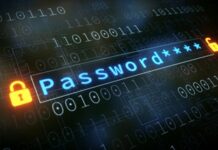
As health and safety imperatives become core to the future of every business, workers will discover a new digital interface: their bodies. Biometric interfaces include several methods for measuring and analyzing a person’s physical or behavioral characteristics. Given an individual’s unique biological attributes — fingerprints, voice, face, irises or DNA — biometrics offer promising advantages over passwords, but the opportunities and risks far transcend access controls.
Biometric sensors for employee authentication and access controls have been used for decades in high-security environments like government and financial services, but now, businesses of all sizes and sectors are deploying IoT biometrics.
Recent shifts in technology, costs, and health and safety practices are expanding the market rapidly with more than a dozen distinct use cases. Identification via smart infrastructure. Smart door locks, terminals, machines and cameras are all examples of equipment that an organization can outfit with biometric sensors for authenticating a person’s identity to access a place or resource. Organizations are also developing related solutions for remote access, such as telehealth.
Identification via touchless sensors
In light of the novel coronavirus, contact-free touchpoints offer one way to reduce the likelihood of infections spreading. Some organizations turn to IoT biometrics for high-security uses such as access controls and payments. For example, Hewlett Packard Enterprise’s new return-to-work offerings include facial recognition to enable employees to enter a location without touching door handles or keypads.
Multifactor identity authentication
Biometrics are an emerging factor organizations use as an enterprise security authentication mechanism. For example, employees are asked to present biometrics for access controls login authentication when using an enterprise mobile app to access sensitive data, accounts or other assets.
Identification for risk reduction
Biometrics are also being used to reduce fraud, theft, cyber-risks and health risks. For example, the Coca-Cola Co. uses a biometric fingerprint system to track the activity of independent truck drivers entering its canning facilities.
Another firm called ‘Verifyii’ offers visitor and vendor credentialing with thermal scanning to reduce the risk of contracting COVID-19.
Candidate evaluation
Organizations can use biometric analysis systems in the hiring process to analyze and evaluate prospective employees. Recruiters conduct video interviews using voice and facial recognition AI to analyze word choice, tone and facial movement based on responses to gamified behavioral assessments.
Location and proximity monitoring
In addition to cameras, IoT biometric sensors are cropping up in wearables as well and can monitor employee movements. Companies are using geofencing, haptics and a range of other capabilities for surveillance and to ensure social distancing among employees.











